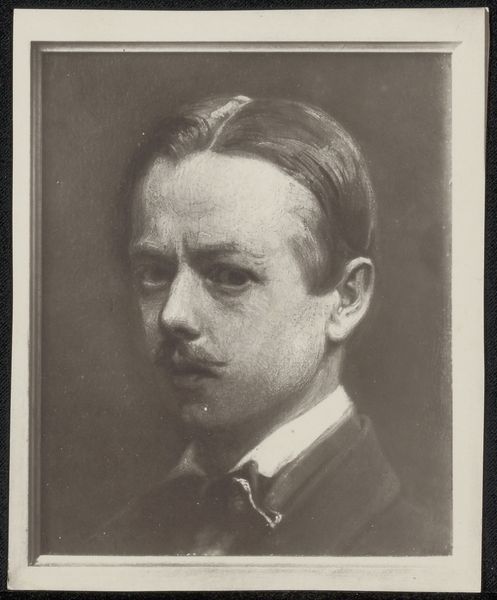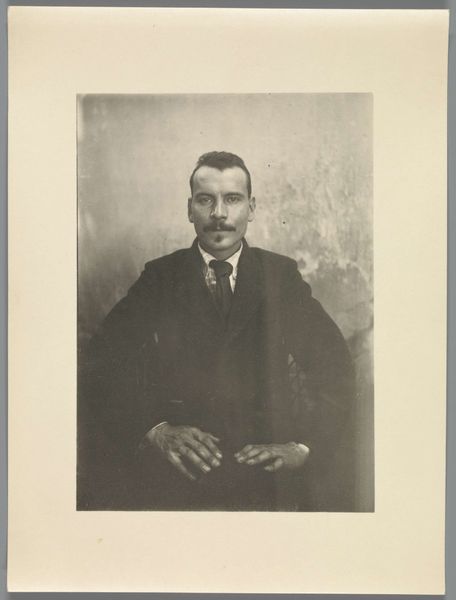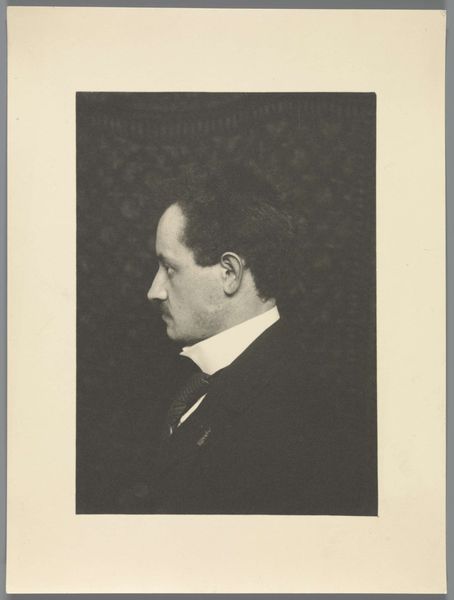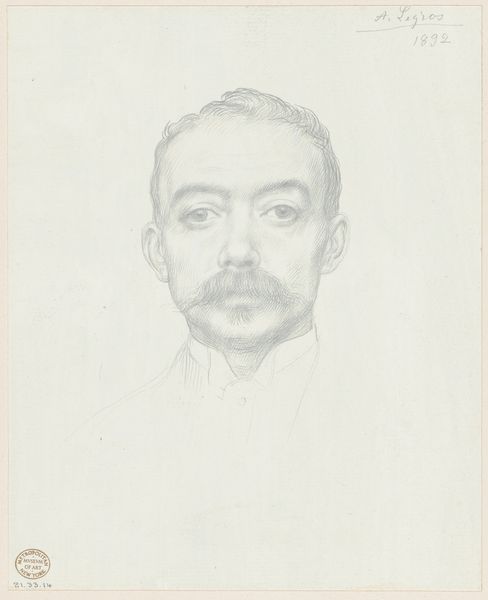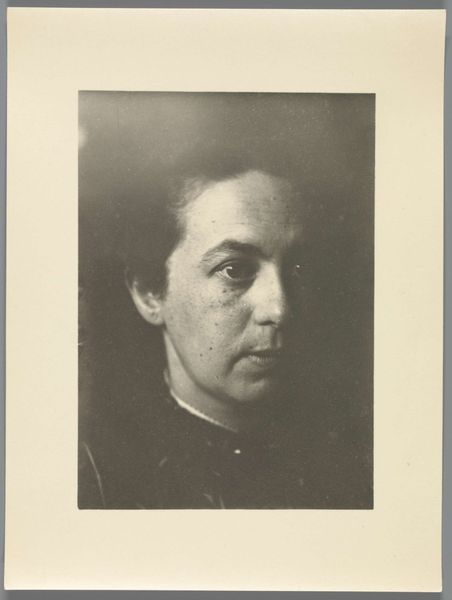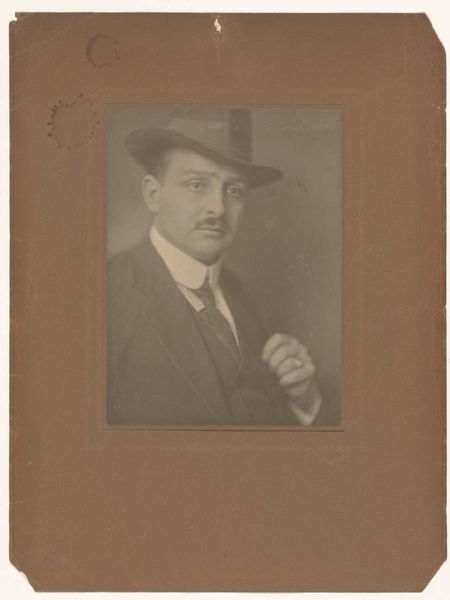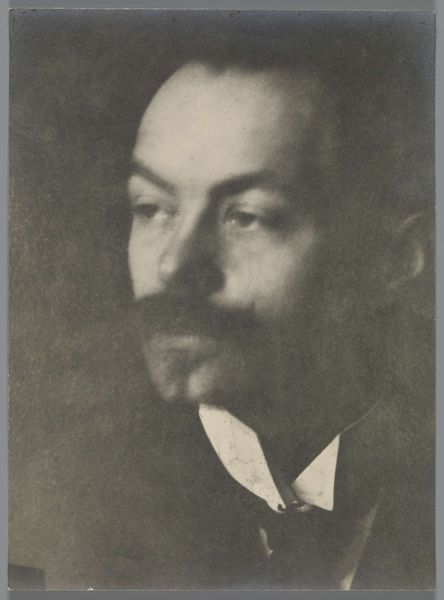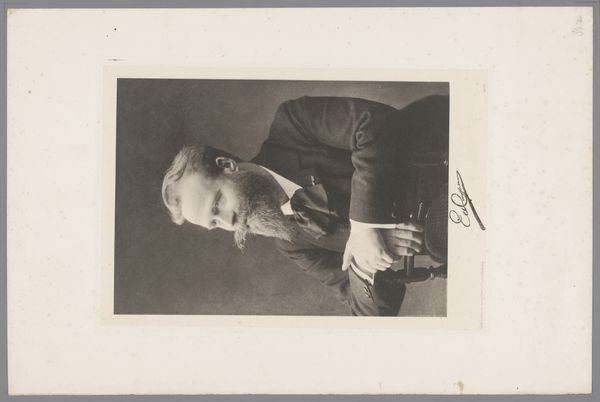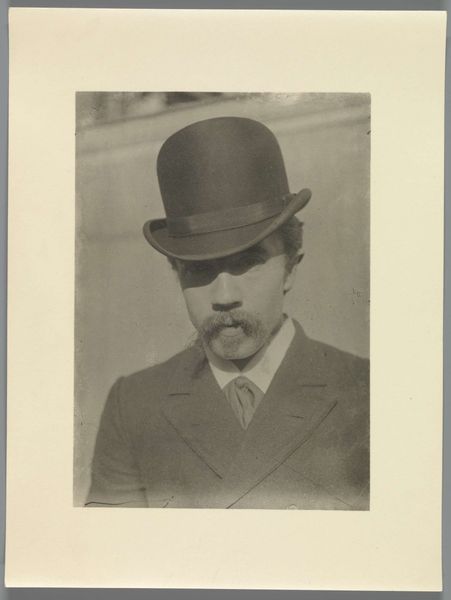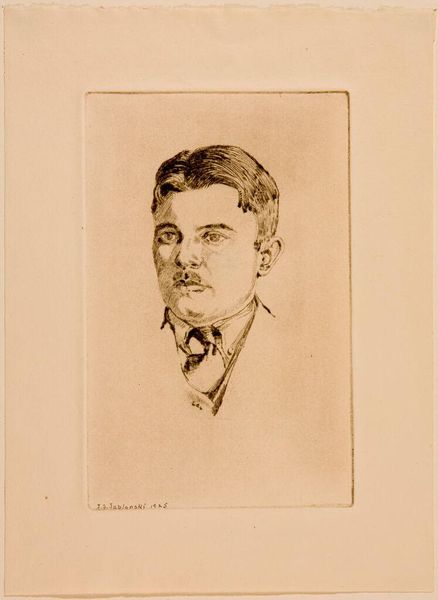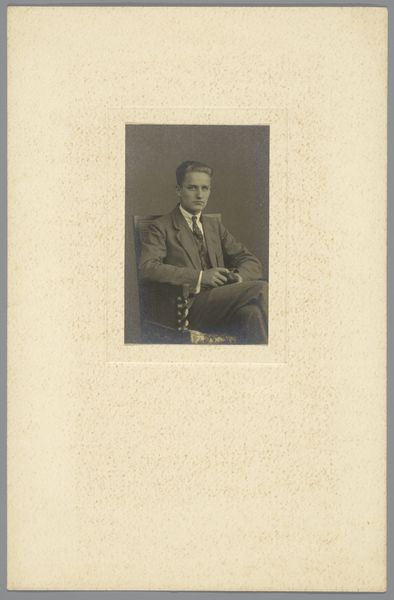
photography, gelatin-silver-print
#
portrait
#
pictorialism
#
photography
#
gelatin-silver-print
#
fine art portrait
#
realism
Dimensions: height 231 mm, width 174 mm, height 168 mm, width 119 mm
Copyright: Rijks Museum: Open Domain
Curator: Looking at this gelatin-silver print, dating from around 1860 to 1915, we see a reproduction of a photograph by Willem Witsen, currently housed here at the Rijksmuseum. Editor: My initial reaction is that there’s something intensely somber about it. The shadows are so pronounced. It feels like a study in light and class. Curator: Absolutely. It embodies the aesthetic principles of Pictorialism, where photography aimed to achieve artistic effects similar to painting, often exploring themes of identity, gender, and social class through careful staging. Witsen, part of the Dutch elite, captured a melancholic mood typical of fin-de-siècle anxieties. This portrait serves as a mirror reflecting back on class and power dynamics. Editor: And consider the material itself: gelatin-silver. This process allowed for a tonal range and depth not previously attainable, creating images with an almost painterly quality. We're not just looking at a man; we're seeing the very physical manifestation of early photographic chemistry attempting to elevate its status amongst other more traditional media. What do you think this signifies regarding societal labor? Curator: Indeed, it signifies the labor invested in creating and viewing photographs—the class and gender dynamics inherent in artistic circles are further enhanced in art production like this. This period witnessed an unprecedented increase in visual culture where portraiture played a crucial role in establishing status. This piece becomes a symbolic statement, pushing beyond just image-making and getting into production as a sign of prestige. Editor: I also note the deliberate blurring and focus play. These are hallmarks of pictorialism and speak to a desire to move photography away from purely documentary and into the realm of "high art", making arguments around labor and artistic vision paramount. It forces viewers to see production efforts around artistic expression within the same context. Curator: That's astute. The selective focus blurs social differences, softening any sharp judgements of his status. This portrait engages in an interesting discussion on the male gaze as well, through posture and pose; therefore, gender expression cannot be discounted here. Editor: I'm left thinking about how even in an image so focused on traditional art values like realism and technique, the very act of making something is really telling its own distinct story. The use of silver adds literal weight but historical meaning, creating tension around its status between industry or artistry; I wonder about that today. Curator: Exactly. The layering of these tensions creates space to evaluate photography within critical, historical discourse rather than dismiss the photograph as something simply produced.
Comments
No comments
Be the first to comment and join the conversation on the ultimate creative platform.
